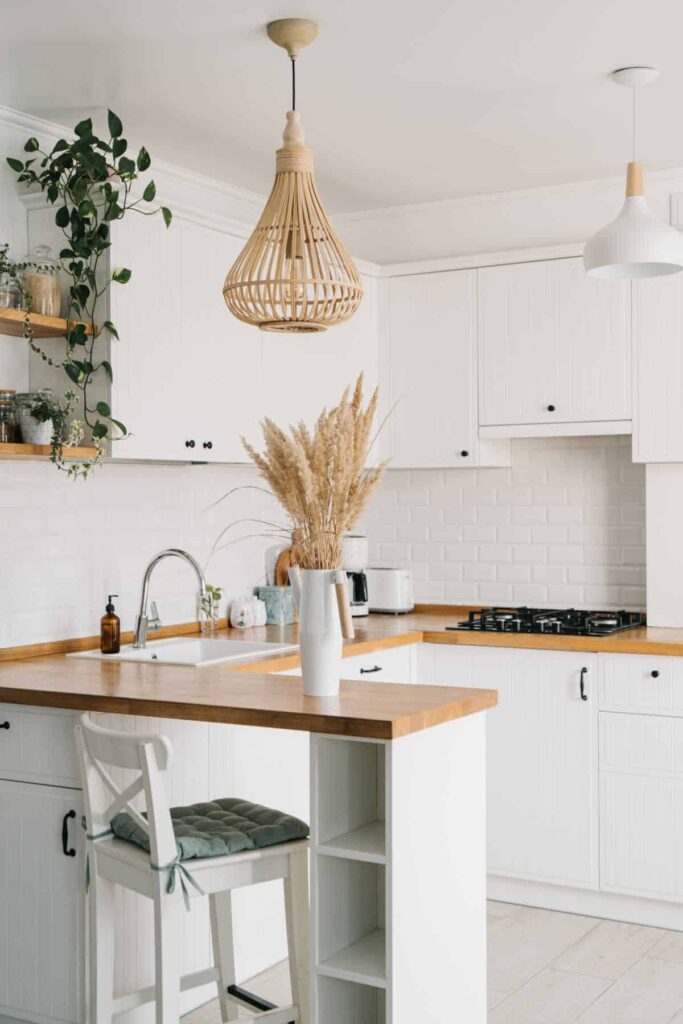What Temperature Should A Boiler Be Set At?
To support the running costs of Moral Fibres, this post contains affiliate links. This means Moral Fibres may earn a small commission, at no extra cost to readers, on items purchased through these links.
Looking to know what temperature a boiler should be set at? I’ve got all the information you need to warm your home effectively, without wasting energy.
Looking for easy ways to save energy? One way is to look at the temperature your boiler is set at.
You see, the average boiler hot water thermostat in the UK is set to 65ºC. This is very inefficient and could be using more energy and costing you more money than your bills should be.
At 65ºC, you have to cool the water that you’ve spent money heating with cold water to be able to use it in the bath or shower. It’s also quite an inefficient temperature, as heat loss from your boiler/hot water cylinder is also increased.
What Temperature Should A Boiler Be Set At?

I’d recommend checking your boiler, or even just having a think about how hot your hot water taps are. Do you find you have to add cold water when you’re washing your hands to bring it to a comfortable level? Then your boiler temperature is probably set too high.
It’s recommended that you set your boiler temperature for water at 60ºC.
At 60ºC water is still sufficiently hot for almost all domestic uses. So go and turn the water temperature on your boiler down to 60ºC (but not before you’ve read the safety advice below).
It’ll take less than a minute to do and you’ll have a nice warm glow. Your boiler won’t have to work as hard, prolonging its life. You’ll also save both the environment and money. It’s estimated that you’ll save around £30 a year if you turn your boiler temperature down from 65ºC to 60ºC. This is a healthy amount to save for very little work.
An Important Word of Warning
Don’t set your boiler temperature too low. This is because at low temperatures the bacteria responsible for Legionnaires’ Disease – a potentially fatal lung infection spread through the inhalation of waterborne particles – can thrive and multiply.
According to the Health & Safety Executive, the legionella bacteria (which cause the disease) require a temperature of between 20-45ºC to grow. The bacteria do not survive at temperatures above 60°C. Therefore, by setting your boiler temperature to 60ºC you’re well out of danger.
What About The Radiator Temperature On The Boiler?
For combi boilers, it’s recommended that you set the radiator output temperature on your boiler to between 70°C and 75°C in winter. This is the optimum temperature for your boiler to heat your home quickly and efficiently. Set it higher than this, and the boiler won’t enter condensing mode, which isn’t very efficient or cost-effective.
In autumn and spring, you can reduce this temperature further – to between 50°C and 55°C. To heat your rooms effectively without overheating.
What About The Room Temperature?
The optimum room temperature is around 18 to 21°C. This temperature range is the most comfortable and healthy for day-to-day living. Here are some tips on how to set the timer on your boiler if you need some advice.
So there you go: turning down the temperature on your boiler a few degrees will save you a pretty penny, and the environment. And you’ll also reduce the risk of scalding from your bathroom or kitchen taps. This makes this tip a triple win!
I’ve got more easy energy-saving tips right here in my archive if you are looking for more energy-saving inspiration.
Found this post useful? Please consider buying me a virtual coffee to help support the site’s running costs.





The physics is set q = m c deltaT where q = heat, m = mass c = specific heat capacity and delta T = temperature difference
The argument for the boiler running longer at a lower flow temperature can work for condensing combi boilers because they “recover” heat from flue gasses etc
In standard boiler situations it can be argued to run at higher flow temperatures because radiators will heat up quicker. Say in an oil boiler it is either running or not, so running it to a higher flow temperature to heat up the radiators quicker so it switches off, will be more efficient
These ‘standard boiler’ systems would normally be on an S-type system with separate valves to control flow to the central heating and hot water cylinder. The cylinder temperature is controlled by the cylinder thermostat which opens the valve, therefore a hotter flow temperature will heat the domestic hot water quicker. The cylinder has its own flow temperature thermostat so shouldn’t be confused by the boiler flow temperature
The temperature of the domestic hot water should be set at a safe temperature rather than one to save energy, so 60C – however – most articles on this mention the danger of legionella below 60. Legionella is an aerobic bacteria and therefore cannot survive in a closed heating system such as with a Megaflo type cylinder because there is no oxygen
Summary. Combi / condensing boilers lower the flow temperature. Standard systems raise it
If you have an oil boiler and “smart” controls such as radiator valves and thermostats, set water flow at 70-75C and program so that water and central heating come on at the same time in the morning so as to reduce boiler run time, ie, don’t heat your cylinder when the central heating is off
When turning down the boiler temperature, you need to consider the heat output generated by your radiators. Most radiators are based on delta 50 (70 degrees – 20 degrees) to calculate heat output. If you lower the boiler temperature to 60 degrees, your radiators will be operating at delta 40 (60 degrees – 20 degrees). Therefore, less heat is generated and more gas is used and the boiler is constantly burning and pumping. I tried setting my boiler to 60 degrees, ended up using more gas and the house never got past 18.5 degrees.
Unless you have oversized radiators that can pump heat at the same rate at a delta 50 rating when the boiler is at 60 degrees (delta 40) then there could be a saving. Due to my radiator sizing, it is not possible to run the boiler at 60 degrees as the boiler never stops. So my boiler is set to 74 degrees, this ensures the boiler will stop when the house reaches my thermostat set point of 20 degrees.
I understand where you are coming from. The only issue I would say is that if you have a condensing boiler, at 74 degrees it’s running at too high a temperature to actually condense. This means your boiler won’t run very efficiently. Turning it down a few degrees to 70 would allow your boiler to condense whilst still heating your home your preferred way.
While I agree that turning down the room thermostat or the thermostat on the hot water cylinder will save energy, I’m not sure I agree that turning down the boiler temperature will save anything, if thermostats remain at the same level. But first, there is a contradiction in what you say. You say that for combi-boilers turn down the radiator output temperature to 75. I do not have a combi boiler: the “same” water heats the hot water cylinder and the radiators – albeit with different circuits and thermostats – but the water temperature in the gas boiler is the same for both and cannot be individually adjusted. But irrespective of the type of boiler, if the thermostats remain the same, then it takes the same amount of energy to heat your house (or your water) to the given temperature. This means that if the boiler temperature is lower, it will take longer to heat your house (or water). With a longer time, the pump(s) will uses more energy, so in simple terms, assuming the same heat energy is required from the boiler, with the pump running longer you will use more energy. Also, will the longer time also result in greater heat losses from inefficiencies in the system (a longer time for heat losses to occur)?
I’m not sure it is as simple as ‘time to heat’ dictating total efficiency. Condensing boilers operate more efficiently if the return water temperature allows the condensing behaviour to happen, something like 50c is what I have read. Pumps and the like draw very little energy compared to the gas energy used, so optimising gas energy use is, I presume, the more important factor.
Shared heating between radiators and DHW require the flow temperature to be at or above the desired DHW temperature, which limits choice to 60c+ as to avoid Legionella DHW should be 60c according to Govt recommendations.
I would be interested in anyone chiming in here with the true facts of the efficiency argument.